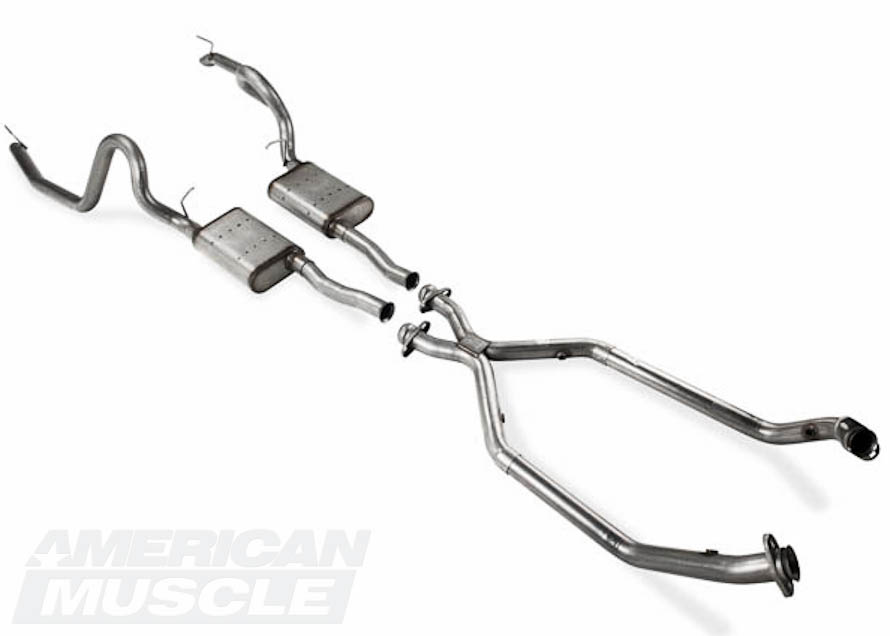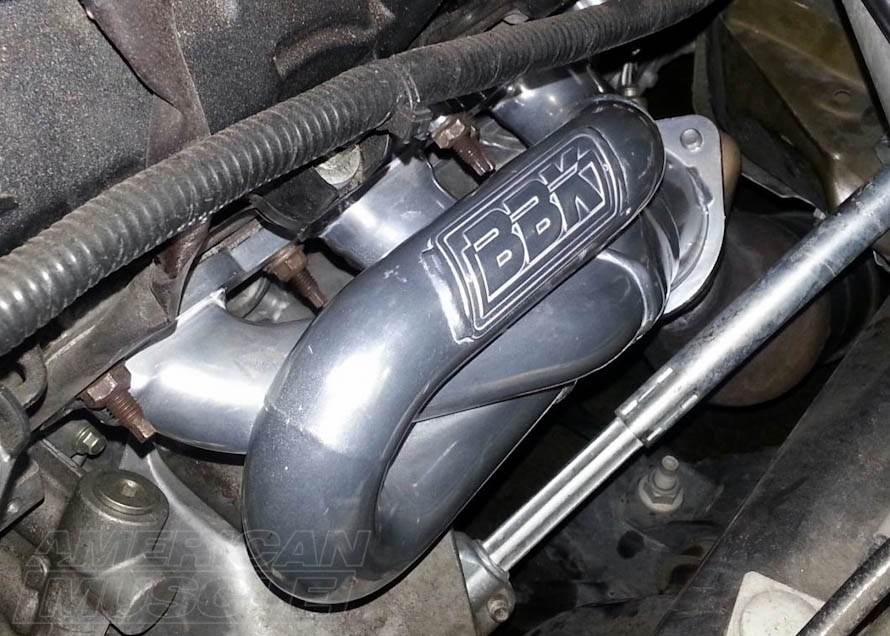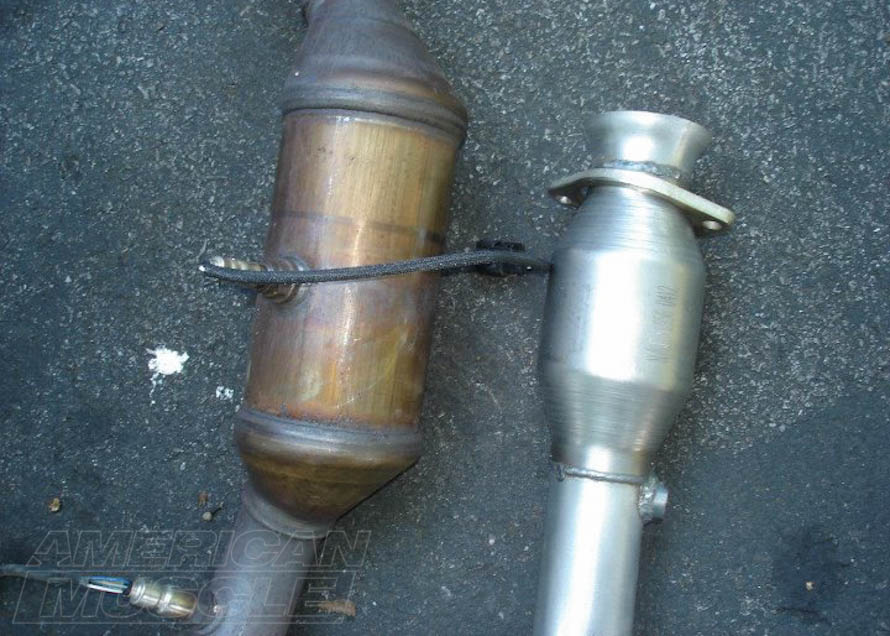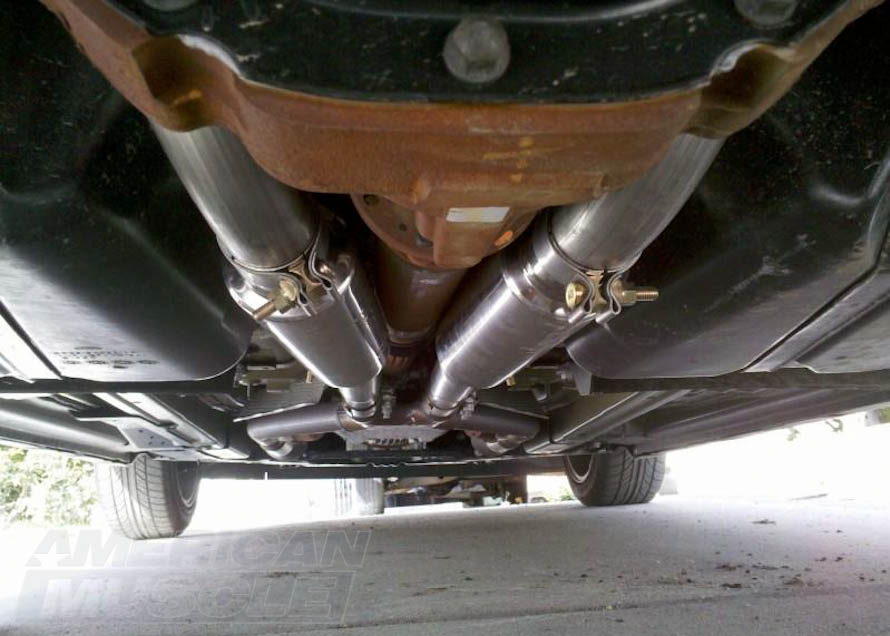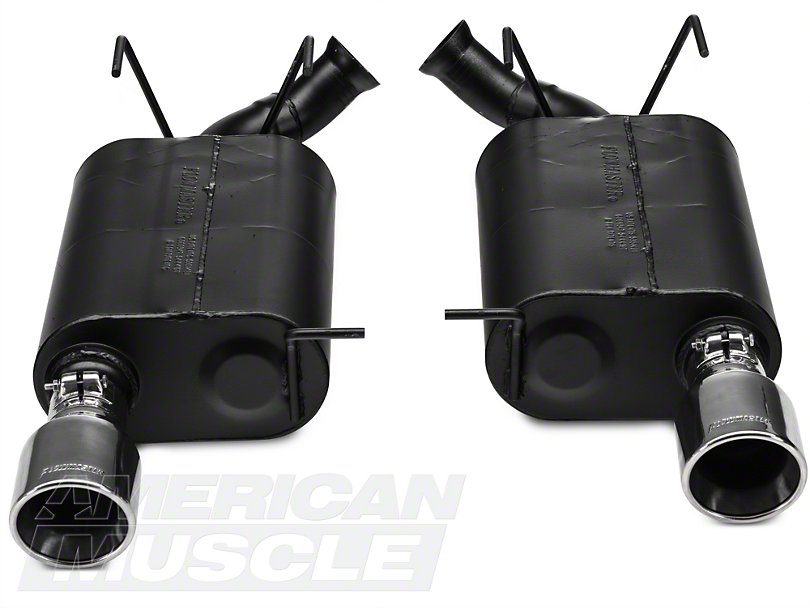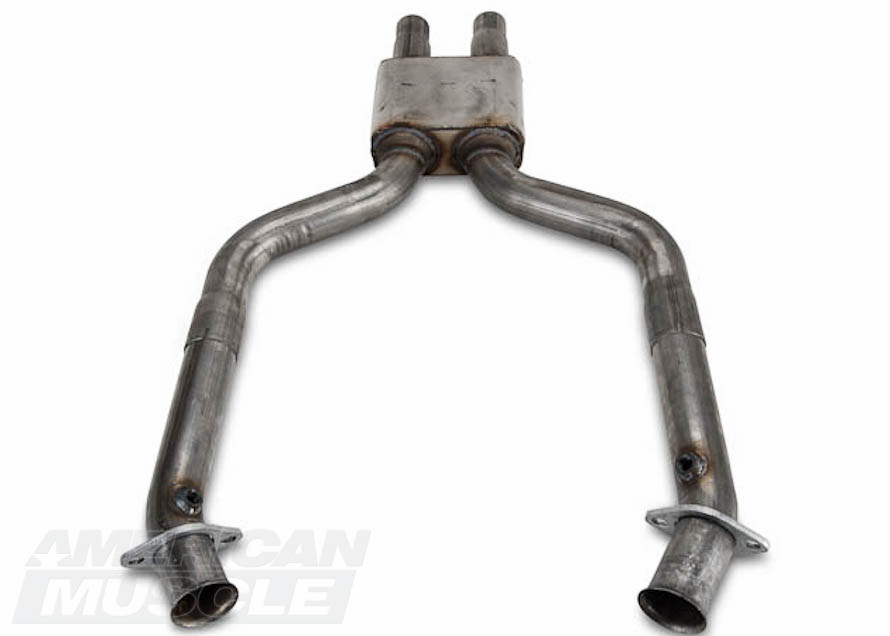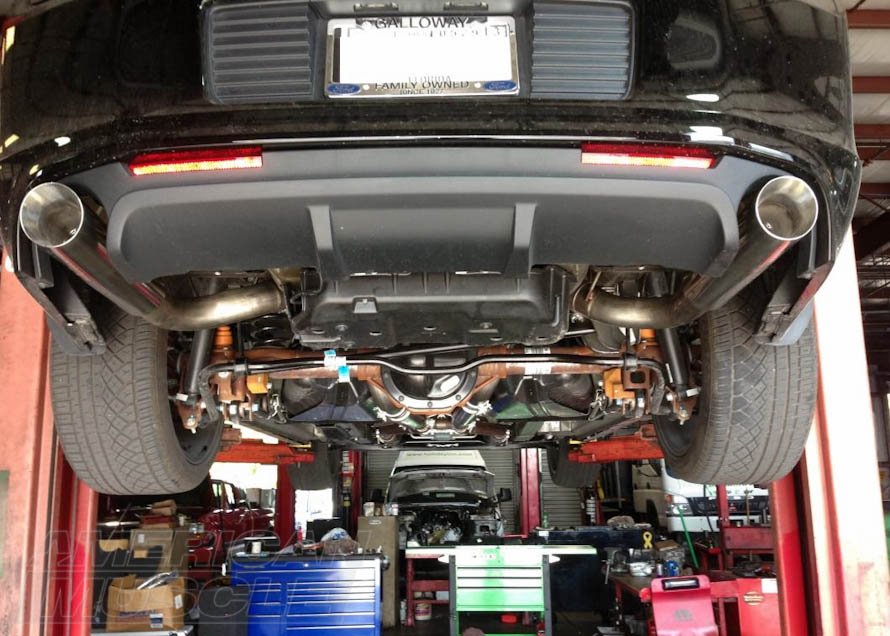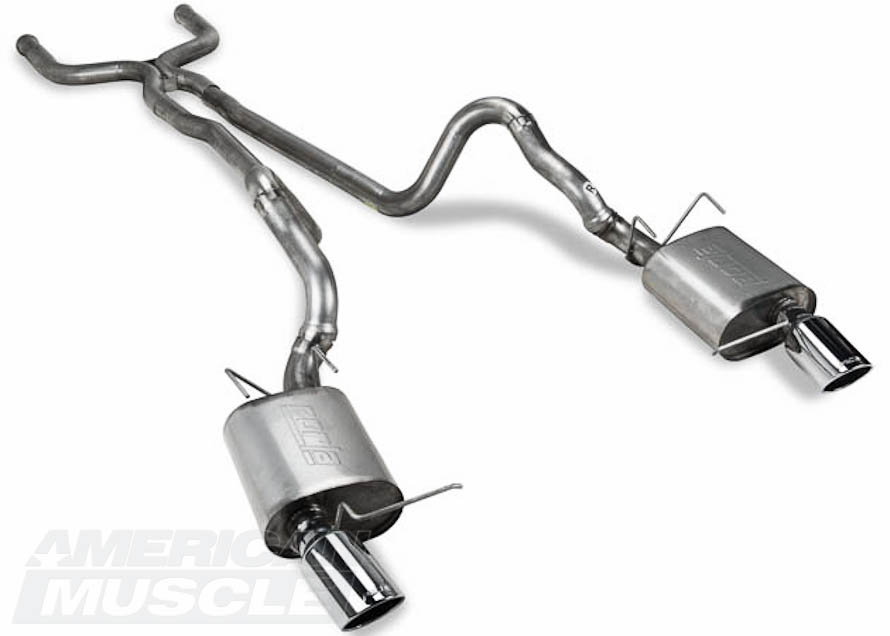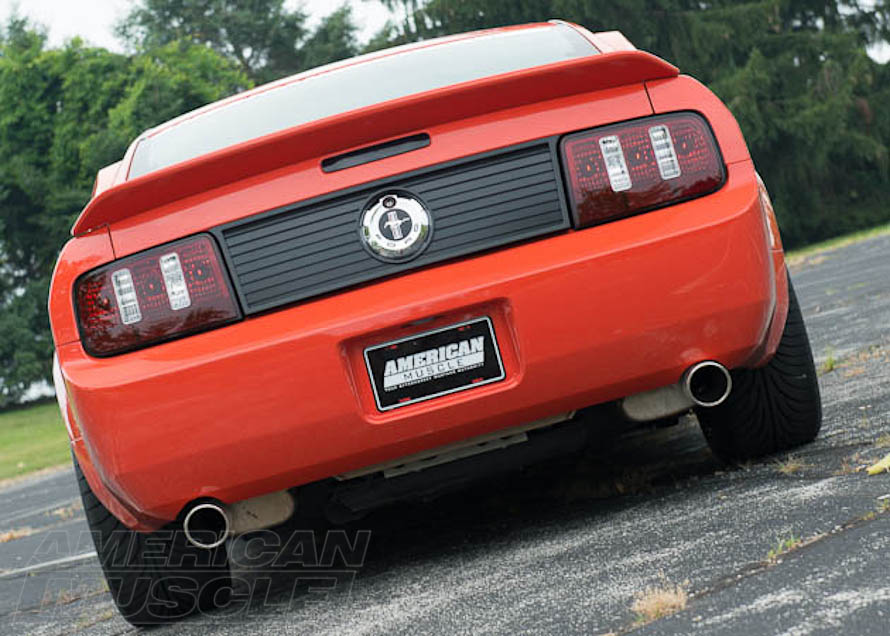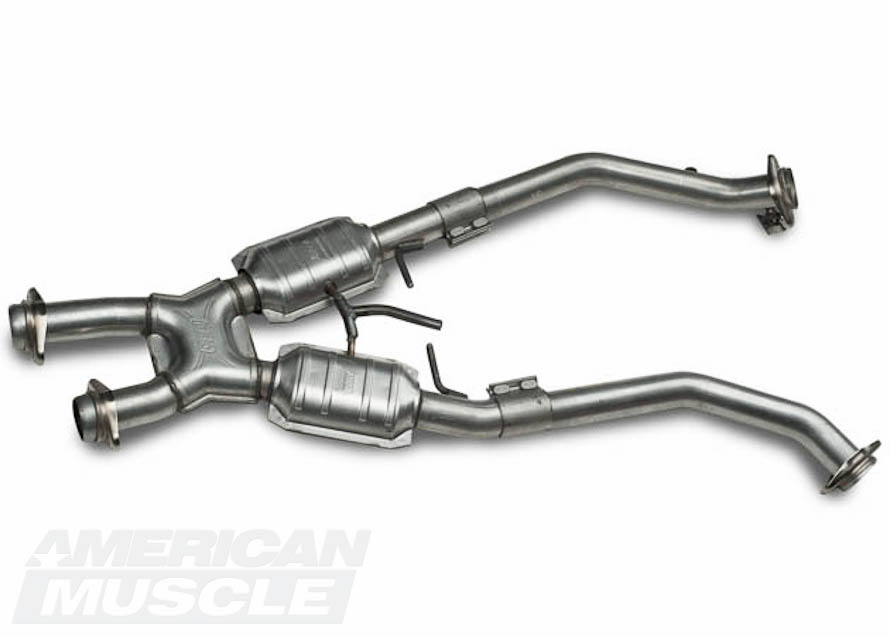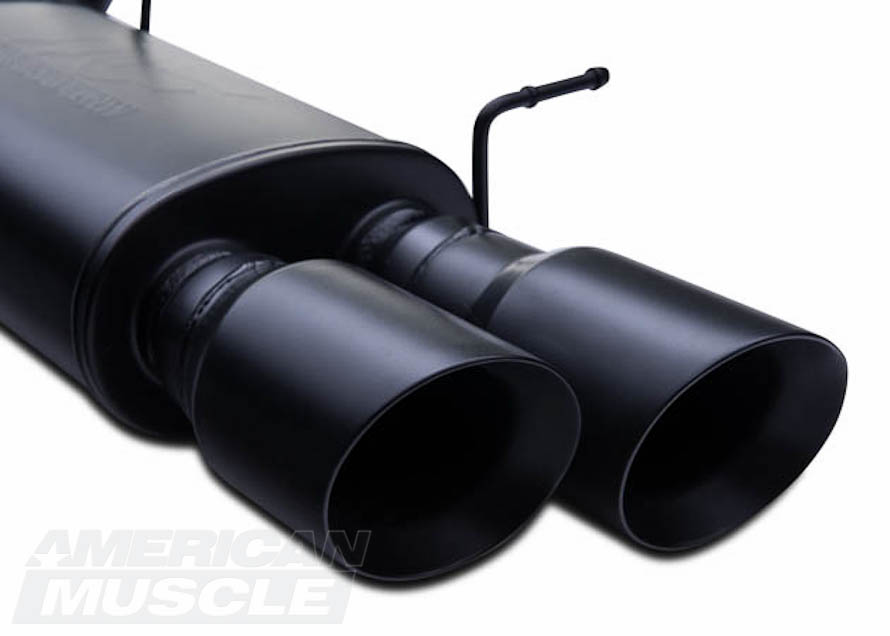The best way to describe a V6 Mustang's exhaust is restrictive. Upgrading from stock or converting to dual exhaust improves air flow, horsepower, and gas mileage while giving you a deeper tone. Replacing the exhaust is usually the first modification for most V6 owners.
Contents
- Consider Two Factors: Sound & Performance
- The V6 System in a Nutshell
- V6 Mustang Headers - Biggest HP Gains
- V6 Shorty Headers vs. Long Tube Headers
- Regarding the Factory Y-Pipe
- Cat-Back Exhaust Systems
- Choosing a Muffler that's the Right Sound
- Catalytic Converters - Street or Off-Road?
- How do Catalytic Converters Effect Sound?
- Can I Install Exhaust Parts Without a Shop?
- Can You Interchange a V6 & GT Mustang Exhaust?
- V6 Dual Exhaust Adapter Kits
- Eliminating the Y-Pipe: H-Pipe and X-Pipes
- Dual Conversion - Cost of Installation
- Adjusting Your Mustang's Rear Valance for Dual
- Do I Need a Tune for Dual Exhaust?
- Dual Conversion Recommendations
- How Should I Research Exhaust Sounds?
Shop V6 Conversion Kits
Dual exhaust is not only beneficial to the V8 guys; the 6-cylinder Mustangs see a sizable performance gain from converting the restrictive stock, single exhaust into a true dual setup.


